WHAT WE DO RESIDENTIAL COMMERCIAL SCHOOLS ABOUT CONTACT GOLF SIMULATOR

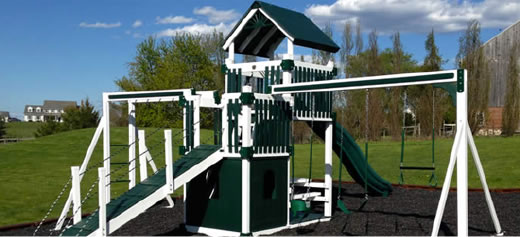
Why Rubber Playground Tiles are the WORST solution for smooth-surfacing (learn about the best solution, and why)
For playgrounds, safety surfacing is critical. Children on playgrounds should not have to be concerned that adults took precautions to install safety surfacing that is actually, SAFE.
Kids just want to have FUN on playgrounds.
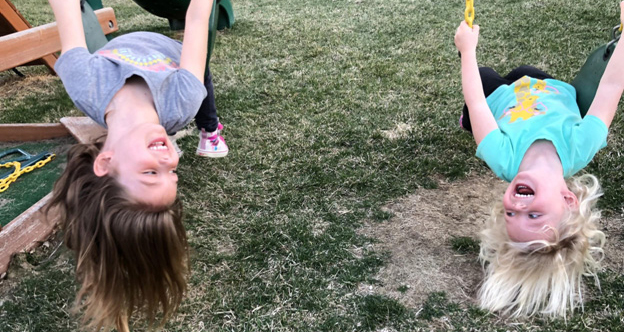
They should not need to worry if there was enough money in the budget to protect their developing brains from bouncing off a hard surface below, when they accidentally slip from the monkey bars or a ladder.
We've all heard the saying.. "WHEN I WAS YOUNG WE DIDN’T HAVE ANY SAFETY STANDARDS AND I TURNED OUT OKAY!"
Right. Well what about the kids who aren’t around any longer to tell their stories? Or the parents who have to live with the reality of life-long disabilities caused by an injury on a playground that could and should have been prevented?
How it Began
In the 1970s & 80s, PEA GRAVEL was king. Then mulch found its way into some commercial playgrounds. And even rubber mulch emerged as a contender, due to improved shock attenuation properties over wood mulch.
Anyone that has been to a playground knows, loose-fill surfacing is a MESS at BEST, and a massive safety risk at WORST.
The problem with mulch & gravel is the M-I-G-R-A-T-I-ON .. which means, it moves around the playground, especially in the areas you need it MOST. The bottoms of slides, under swings and climbing structures like monkey-bars. Foot-traffic is it’s worst nightmare, causing displacement of the material.
The picture below taken from a local playground in Nebraska gives a good idea on what can happen to rubber, so we all know the result on a playground with LOOSE fill...
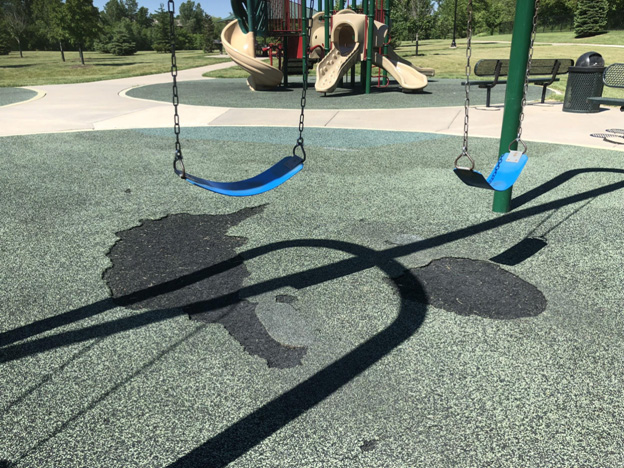
Naturally, migration of material causes the coverage to become thin. Which means there is less material between a falling child and the hard ground underneath.
In some cases, there is even CONCRETE at the bottom, and most times compacted dirt .. often times just as hard as concrete.
This leads to many injuries, some of them traumatic. Unfortunately, traumatic brain injuries (TBIs) have been on the rise on playgrounds.
The National Safety Council lists "Improper Protective Surfaces" first on their list of “what to look for” to stay safe on playgrounds.
Why? Unfortunately because it’s the leading cause of injuries on playgrounds today.
Playground-Related TBIs
- The overall rate of ED visits for playground-related TBI has significantly increased in recent years (2005-2013).
- About two-thirds of playground-related TBIs occurred at school and places or recreation or sports and often involved monkey bars, climbing equipment, or swings.
- Most ED visits for playground-related TBIs occur during weekdays, Monday through Friday.
- Playground-related TBI ED visits occurred frequently during the months of April, May, and September.
Playgrounds are slowly figuring out that loose-fill surfacing on a high-traffic public playground is NOT an effective or safe solution.
Some progressive communities are recognizing it’s well worth the money to invest in the surface, instead of only focusing on the equipment. It doesn’t matter how beautiful the equipment is, if you can’t protect a child that falls, which is inevitable .. because kids are kids, and kids have accidents.
Playgrounds are beginning to upgrade to a smooth surfacing such as artificial grass / turf, poured in place (PIP) rubber, or rubber tiles.
Unfortunately, these surfaces still have major flaws, and can still lead to risky playgrounds.
So Which Smooth-Surface is THE WORST?
By far, it's Rubber Tiles. With Poured in Place Rubber as a close second.
Why? Here’s a list of reasons...
All rubber will CRACK & SPLIT.
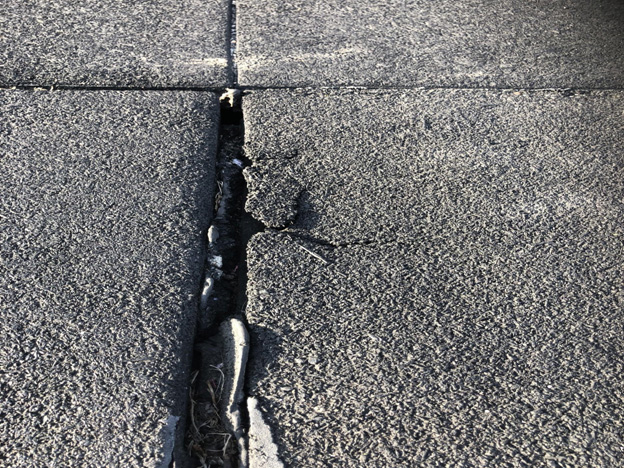
Doesn't matter how perfect the installation was - it's the nature of rubber to expand & contract during temperature fluctuations. The expansion & contraction year after year creates stress on the rubber granules, which leads to deterioration.
All rubber applications will get POT-HOLES.
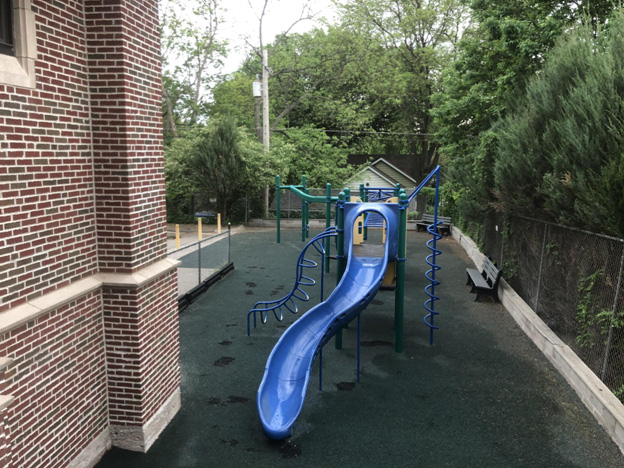
Again, the same reasons for the splitting & cracking. As the rubber deteriorates, that becomes a weak point. Which breaks down further. And whether it’s kids picking at it, or just from the foot traffic - those holes become bigger and bigger. Which becomes a tripping hazard at best, and a potential ankle breaking or concussion / TBI waiting to happen at worst.
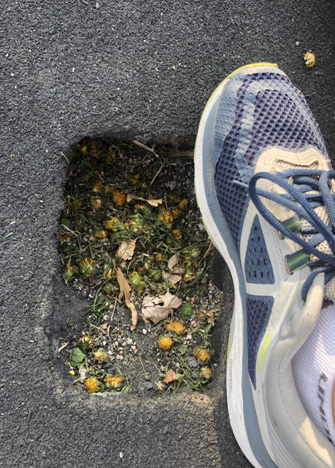
And then there’s handicap accessibility. People with physical challenges are less able to navigate a mine-field of potholes and cracks, compared to a completely smooth surface like turf.
This is just bad for the community first and foremost. But also bad for business - because your playground will quickly become OUT OF ADA COMPLIANCE, and you will be put on notice to repair / replace your hazardous surface or risk being fined, or shut-down.
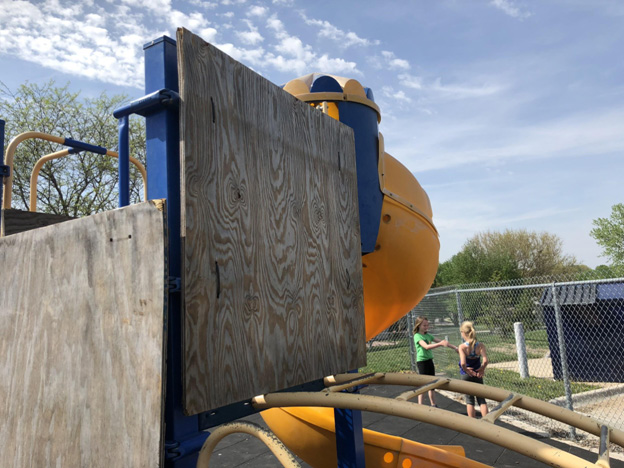
For a full review of the proper guidelines, check-out the Public Playground Safety Handbook.
Replacing a decomposing rubber surface is not cheap, and most of the time was not included in the master budget to replace within 5-10 years of installation. Rubber tiles run from $10-$12 / sq ft installed, which means an average sized playground of 50’ x 50’ would cost about $25,000 to replace.
And typically, it’s not an option to only replace a single tile. Tiles are sold on the notion of “ease of installation and replacement” - because it’s just a single tile, so when a tile fails, you just pull that up and put down a new one … RIGHT??
WRONG.
The problem is, the reason for the cracks is because the outside border has been compromised. Which means ALL of your tiles have shifted. Which means the space to fill in is now MUCH larger than a single tile size. Instead of a 24” x 24” square, you now have a 28” x 32” hole to fill. And replacing one, means you start playing WHACK-A-MOLE with chasing the tile gap across your playground.
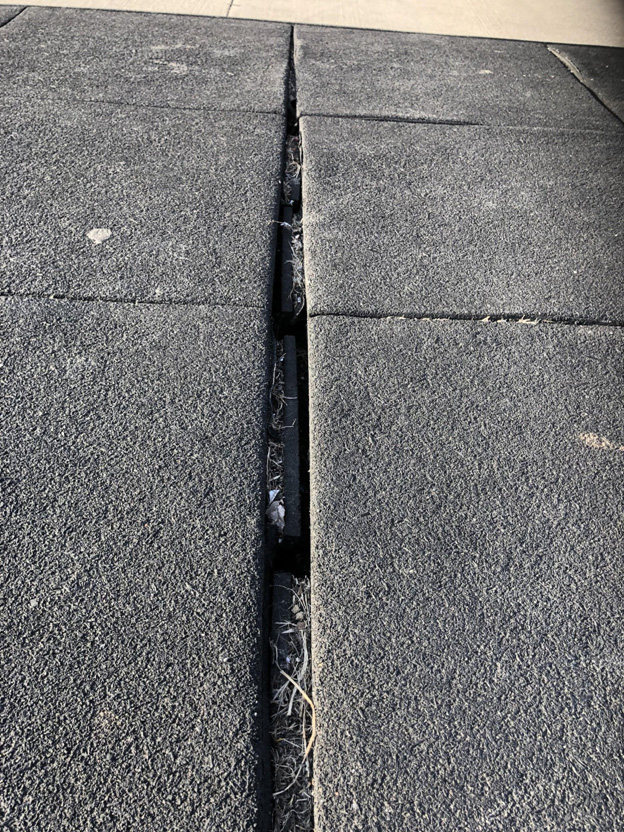
The other problem becomes, if a few tiles have deteriorated, they will all fail soon.
Since they all came from the same batch of rubber, and have all been exposeD to the same environmental stressors (unless some are under a roof), they will all begin splitting / cracking and developing pot-holes. So instead of spending a couple thousand to replacing a few tiles, only to have another safety hazard develop the next month, you might as well accept the reality that ALL tiles need to be replaced.
Also ... DID YOU KNOW … Rubber Tiles are actually MORE expensive than artificial grass to install effectively?!
The common misconception about rubber tiles is they are so much CHEAPER than other smooth-surfacing options like poured in place or turf.
That is completely FALSE.
The reason is because all rubber tile manufacturers recommend the tiles to be installed over CONCRETE, for best performance. And most GOOD installers even require this, in order to guarantee their work.
The reason? Tiles need to be GLUED down, for best performance. Some tiles have interlocking edges, but these still require glue to be applied, and don’t hold very well without a sub-surface attachment.
The problem is, if you don't have existing concrete, this becomes an ADDED COST.
And concrete pouring can run anywhere from $6 - $12 / square foot.
Add this cost to your $10 - $12 / square foot tile cost, and you’re now spending upwards of $20 / square foot for your rubber tile system to be installed!
That's very expensive, especially for an INFERIOR surface which will require replacement within 10 years.
If you already have concrete, the problem becomes the edging.
You will use rubber RAMP EDGES, which the middle tiles will depend on to LOCK them into place.
This is a very insecure method for containing the tiles, and will fail in the near future, leading to giant gaps and tripping hazards throughout your playground.
The Type of Installation DOES NOT MATTER
There are 2 methods for installing tiles.
- Over concrete. This method is typically bordered with RAMP EDGES. The biggest flaw with this method, is the ramp edges do a very POOR job of locking the middle tiles in place. The outside tiles can be anchored with adhesive or even screws, but this does a poor job of keeping the tiles in place long-term .. and eventually you get a TECTONIC SHIFT of the tiles … due to the repetitive foot impact on the tiles and/or gravity.
- Recessed against a curb edging. This method will certainly lock the tiles in place better than the ramp edges. The problem still becomes the expansion & contraction of the tiles during temperature changes. If installed in the summer, they will begin nice & tight … but once the temps drop they will contract and gaps will appear. If installed in cooler temps, you must leave an expansion gap, which means debris will begin collecting .. causing decomposition.
In the end, it’s not a matter of IF rubber tiles will fail .. it’s a matter of WHEN.
Just be prepared with your budget to completely replace your tiles every 5-10 years. But if you have that kind of funding, you might as well just do it right the first time.
So.. what type of surfacing do we recommend?
Artificial Grass + foam shock pad, hands-down.
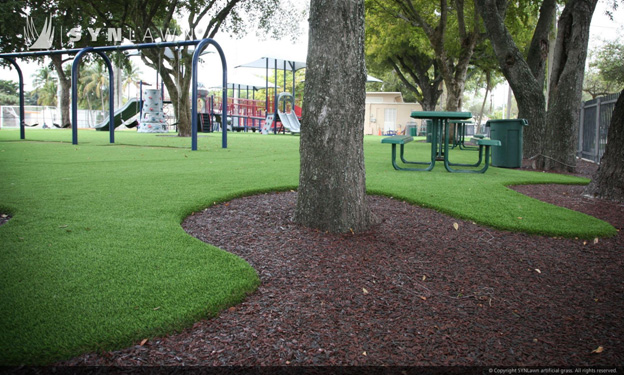
Why? Here are a few reasons to start …
- Looks more natural
- Cooler surface temperature - creating safer environment for kids in hot summer months
- Softer for ground play
- Longer-lasting before maintenance or replacement is required
- Will not deteriorate on surface resulting in potholes, or splitting causing trip hazards - compromising ADA compliance
- Consistent fall height protection regardless of temperature - rubber will expand & contract creating fluctuations in fall protection
- Proven to result in less bone fractures due to limbs sliding across turf when falling. Compared to rubber which “grabs” limbs upon falling, resulting in more bone fractures
- ADA friendly year-round
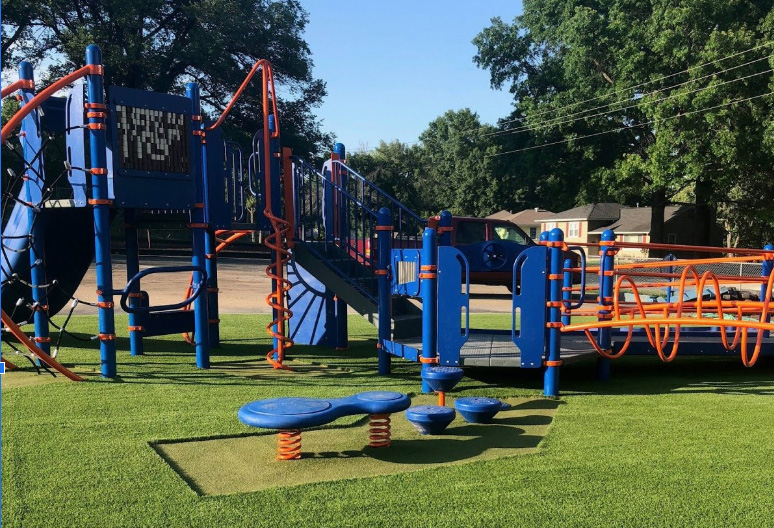
We hope this article was helpful, and will prevent many future playgrounds from making a costly and possibly very dangerous surfacing mistake.
In the end, our collective goal as parents and administrators is to keep our kids safe! And it starts with the surfacing.
Let us know if you have any questions, or would like a quote for premium commercial playground equipment, or SAFE surfacing.
P.S. -- yes we do install all types of surfacing, including rubber tiles. We highly discourage it, but in some cases it can still be a good fit when funding is scarce; such as isolated areas like the bottom of slides. In the end, it’s still better than loose-fill, and certainly better than nothing at all!
Thanks for reading!
Play safe.
Chad Schneider
Play, inc.
14706 Giles Rd.
Omaha, NE 68138
402-592-2000
chad@webuildplay.com
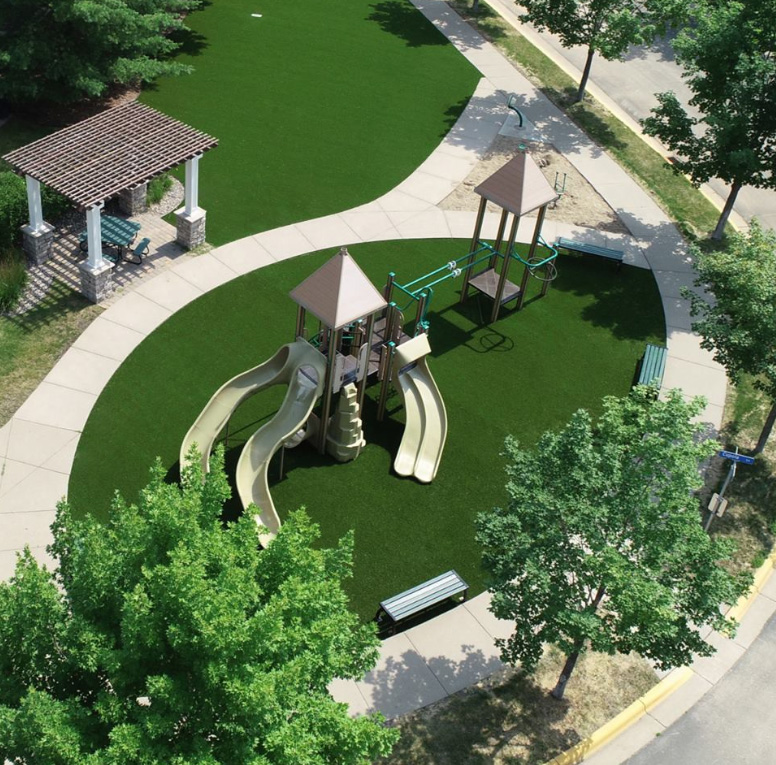
About Us

Based in Omaha, Nebraska, Play, Inc. is a partnership of Practice Sports, Inc. and a group of experienced tradesmen - offering premium products & services since 2001.
Play, Inc. primarily works throughout the midwest, with services available in other states via our sister company Practice Sports, and other qualified contractors.
Build your PLAY today.
Contact Us ::  Facebook :: Practice Sports, Inc
Facebook :: Practice Sports, Inc
Play, Inc. / 14706 Giles Rd, 2nd Floor, Omaha, NE 68138 / 402-592-2000 / info@webuildplay.com